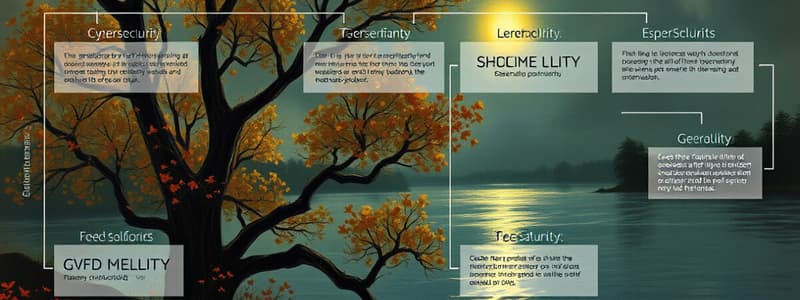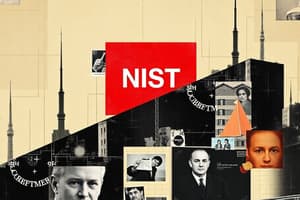Podcast
Questions and Answers
What should be the first step in the process regarding a new system?
What should be the first step in the process regarding a new system?
- Conduct a risk assessment
- Identify business functions and missions (correct)
- Define and prioritize security requirements
- Register the system for management
Which aspect is crucial for understanding how a system manages its information?
Which aspect is crucial for understanding how a system manages its information?
- Information life cycle (correct)
- Authorization boundary
- Asset prioritization
- Identification of stakeholders
What task follows the identification and prioritization of stakeholder assets?
What task follows the identification and prioritization of stakeholder assets?
- Determine the authorization boundary (correct)
- Define security and privacy requirements
- Conduct a risk assessment
- Register the system
Which task involves recognizing different kinds of data handled by the system?
Which task involves recognizing different kinds of data handled by the system?
What is the final step in the mentioned processes regarding a system?
What is the final step in the mentioned processes regarding a system?
Which task involves analyzing potential threats to a system's functionality?
Which task involves analyzing potential threats to a system's functionality?
What is included in the requirements definition phase?
What is included in the requirements definition phase?
What is determined in the enterprise architecture task concerning the system?
What is determined in the enterprise architecture task concerning the system?
During what process are security and privacy needs specifically assigned to system components?
During what process are security and privacy needs specifically assigned to system components?
What aspect must be prioritized after identifying stakeholder assets?
What aspect must be prioritized after identifying stakeholder assets?
Flashcards are hidden until you start studying
Study Notes
Mission and Business Focus
- Identification of missions and business functions that the system supports is crucial.
- Enables alignment with Cybersecurity Framework profiles and implementation tiers.
System Stakeholders
- Identification of stakeholders is essential for understanding their interests and impacts on the system.
- Contributes to better asset and resource management within the cybersecurity framework.
Asset Identification
- Stakeholder assets must be identified and prioritized for effective risk management.
- This process falls under the ID.AM category of the Cybersecurity Framework.
Authorization Boundary
- Establishes the system's authorization boundary, defining the scope of its governance and control.
Information Types
- Identification of information types processed, stored, and transmitted by the system is necessary for data governance.
- Relates to the Cybersecurity Framework ID.AM-5.
Information Life Cycle
- Understanding all stages of the information life cycle for each type of information is vital.
- This includes processes for data creation, storage, usage, sharing, archiving, and destruction.
Risk Assessment—System
- A comprehensive system-level risk assessment is required to identify and mitigate potential security risks.
- Regular updates to the risk assessment are necessary to adapt to new threats and vulnerabilities.
Requirements Definition
- Defining and prioritizing security and privacy requirements ensures compliance and protects sensitive information.
- Relates to governance as per Cybersecurity Framework ID.GV and PR.IP.
Enterprise Architecture
- Determination of the system's placement within the enterprise architecture enhances strategic alignment and coverage.
Requirements Allocation
- Security and privacy requirements must be allocated to the system and its operating environment for effective implementation.
- This ensures a holistic approach to managing cybersecurity risks.
System Registration
- Registering the system facilitates management, accountability, coordination, and oversight.
- Essential for maintaining operational integrity and compliance within the organization.
Studying That Suits You
Use AI to generate personalized quizzes and flashcards to suit your learning preferences.




